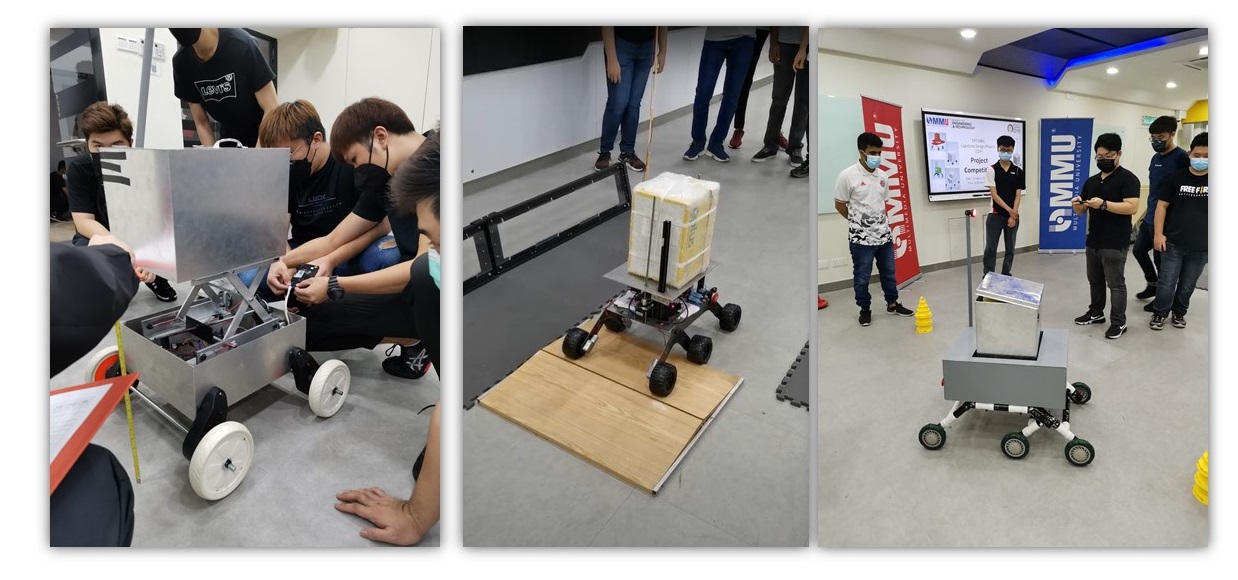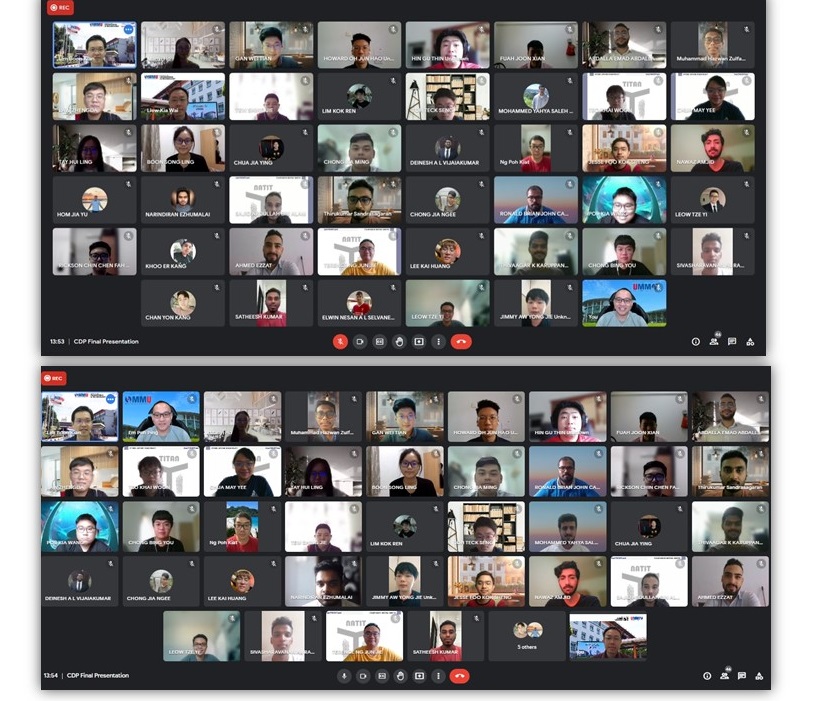In responding to the dynamic growth of the parcel delivery market-driven globally by the e-commerce and the skyrocketing demand for the delivery service during pandemic COVID-19, a total of 41 Mechanical Engineering (ME) students or 8 project teams from the Faculty of Engineering and Technology (FET) accepted a challenge and participated in the Capstone Design Project Competition in RoboSpace lab, recently. The students were required to design and build a unique parcel delivery rover (PDR) that is capable of carrying a 10.0 kg package through an obstacle course and delivering the package to its final destination.
Several stringent design requirements were imposed in the competition such as a moving mechanism for overcoming the obstacles: slalom, slope, and uneven terrain, a lifting mechanism for raising and lowering the package, an emergency stop button, and a warning light for safety measures. Student teams learned the product design process and techniques, and used their creativity and innovation to solve complex engineering problems by conceptualising the design, selecting and analysing it before fabricating a working prototype. The competition was judged based on the prototype design, creativity, functionality, and the quality of the workmanship. The course lecturers – Dr. Lim Boon Kian, Dr. Liew Kia Wai and Assoc. Prof. Ir. Ts. Dr. Ng Poh Kiat were involved in judging and assessing the competition. Three winning teams were awarded specially designed and 3D-printed trophy plaques and certificates of awards.
Prior to the competition, the students had carried out a final presentation for their projects and they were assessed by two representatives from Dyson Malaysia Development Centre through James Dyson Foundation, namely Mr. Muhammad Hazwan Zulfadhli (Lead Product Verification Engineer) and Mr. Azri Mahsan (Motor and Pick Up Systems Lead) together with the course lecturers. The student teams presented their projects from the mechanical engineering design process to the demonstration of the working prototypes, as well as the way the projects are managed with considerations of the sustainability, cost-effectiveness, safety, and environmental impacts. At the end of the event, the judges provided valuable observation feedback from the industry and academic perspectives to the students regarding the technical contents and the presentation skills for future improvements.



